
Infrastructure consulting service company AECOM (NYSE: ACM) fell short of the market’s revenue expectations in Q2 CY2025, with sales flat year on year at $4.18 billion. Its non-GAAP profit of $1.34 per share was 6.2% above analysts’ consensus estimates.
Is now the time to buy AECOM? Find out by accessing our full research report, it’s free.
AECOM (ACM) Q2 CY2025 Highlights:
- Revenue: $4.18 billion vs analyst estimates of $4.32 billion (flat year on year, 3.3% miss)
- Adjusted EPS: $1.34 vs analyst estimates of $1.26 (6.2% beat)
- Adjusted EBITDA: $313 million vs analyst estimates of $307.8 million (7.5% margin, 1.7% beat)
- Management raised its full-year Adjusted EPS guidance to $5.25 at the midpoint, a 1.9% increase
- EBITDA guidance for the full year is $1.2 billion at the midpoint, in line with analyst expectations
- Operating Margin: 7%, up from 5.5% in the same quarter last year
- Free Cash Flow Margin: 6.3%, similar to the same quarter last year
- Backlog: $24.59 billion at quarter end, up 5.2% year on year
- Market Capitalization: $14.66 billion
“The strength of our third quarter results, which included outperformance on all key financial metrics, demonstrated the benefits of our competitive edge platform and the high returns we earn on our growth investments,” said Troy Rudd, AECOM’s chairman and chief executive officer.
Company Overview
Founded in 1990 when a group of engineers from five companies decided to merge, AECOM (NYSE: ACM) provides various infrastructure consulting services.
Revenue Growth
A company’s long-term sales performance is one signal of its overall quality. Any business can have short-term success, but a top-tier one grows for years. Unfortunately, AECOM’s 4% annualized revenue growth over the last five years was sluggish. This was below our standard for the industrials sector and is a rough starting point for our analysis.
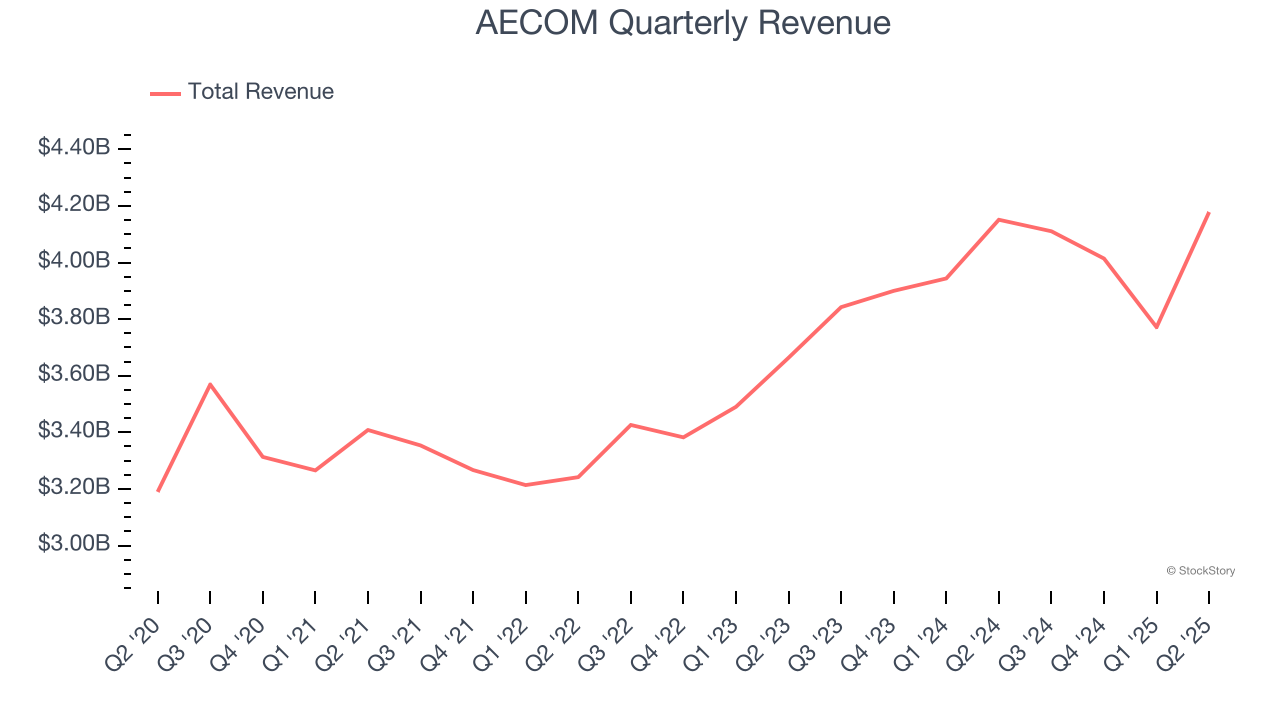
We at StockStory place the most emphasis on long-term growth, but within industrials, a half-decade historical view may miss cycles, industry trends, or a company capitalizing on catalysts such as a new contract win or a successful product line. AECOM’s annualized revenue growth of 7.3% over the last two years is above its five-year trend, but we were still disappointed by the results. 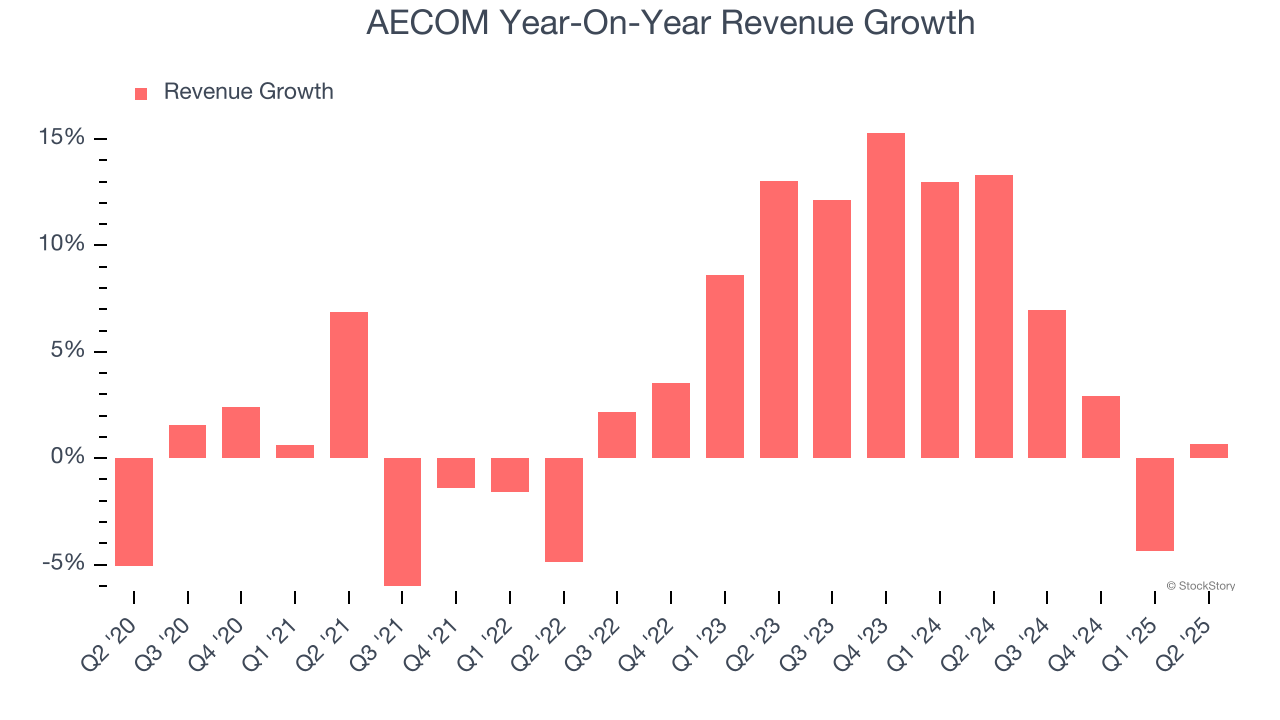
AECOM also reports its backlog, or the value of its outstanding orders that have not yet been executed or delivered. AECOM’s backlog reached $24.59 billion in the latest quarter and averaged 2% year-on-year declines over the last two years. Because this number is lower than its revenue growth, we can see the company hasn’t secured enough new orders to maintain its growth rate in the future. 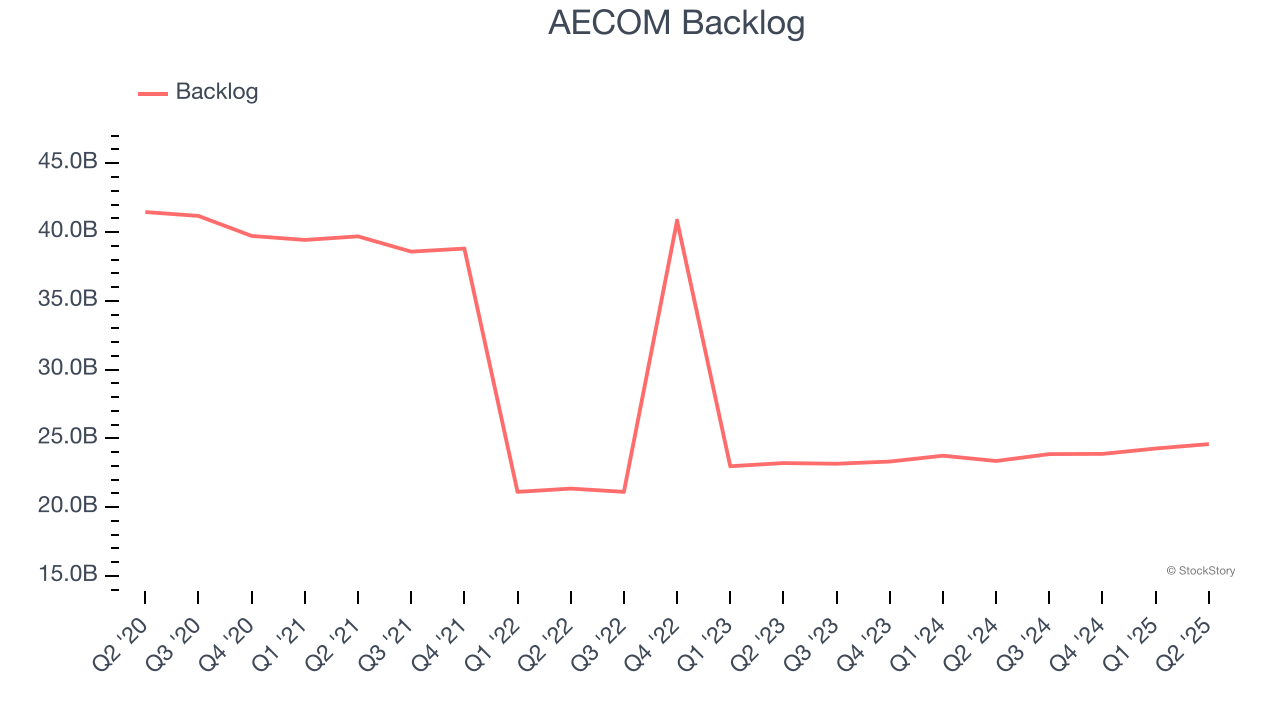
This quarter, AECOM’s $4.18 billion of revenue was flat year on year, falling short of Wall Street’s estimates.
Looking ahead, sell-side analysts expect revenue to grow 7.3% over the next 12 months, similar to its two-year rate. This projection doesn't excite us and implies its newer products and services will not accelerate its top-line performance yet.
Software is eating the world and there is virtually no industry left that has been untouched by it. That drives increasing demand for tools helping software developers do their jobs, whether it be monitoring critical cloud infrastructure, integrating audio and video functionality, or ensuring smooth content streaming. Click here to access a free report on our 3 favorite stocks to play this generational megatrend.
Operating Margin
AECOM was profitable over the last five years but held back by its large cost base. Its average operating margin of 4.5% was weak for an industrials business. This result isn’t too surprising given its low gross margin as a starting point.
On the plus side, AECOM’s operating margin rose by 2.5 percentage points over the last five years, as its sales growth gave it operating leverage.
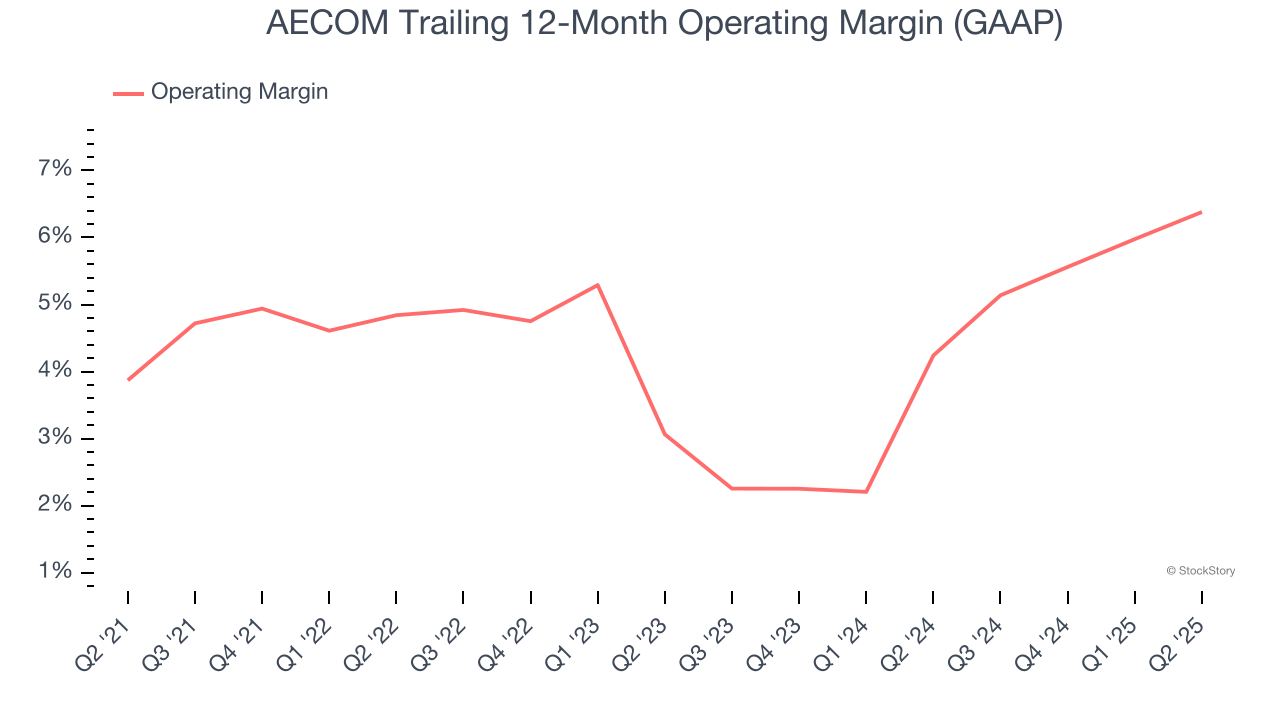
This quarter, AECOM generated an operating margin profit margin of 7%, up 1.6 percentage points year on year. The increase was encouraging, and because its operating margin rose more than its gross margin, we can infer it was more efficient with expenses such as marketing, R&D, and administrative overhead.
Earnings Per Share
Revenue trends explain a company’s historical growth, but the long-term change in earnings per share (EPS) points to the profitability of that growth – for example, a company could inflate its sales through excessive spending on advertising and promotions.
AECOM’s EPS grew at a spectacular 17.1% compounded annual growth rate over the last five years, higher than its 4% annualized revenue growth. This tells us the company became more profitable on a per-share basis as it expanded.

We can take a deeper look into AECOM’s earnings to better understand the drivers of its performance. As we mentioned earlier, AECOM’s operating margin expanded by 2.5 percentage points over the last five years. On top of that, its share count shrank by 17.8%. These are positive signs for shareholders because improving profitability and share buybacks turbocharge EPS growth relative to revenue growth. 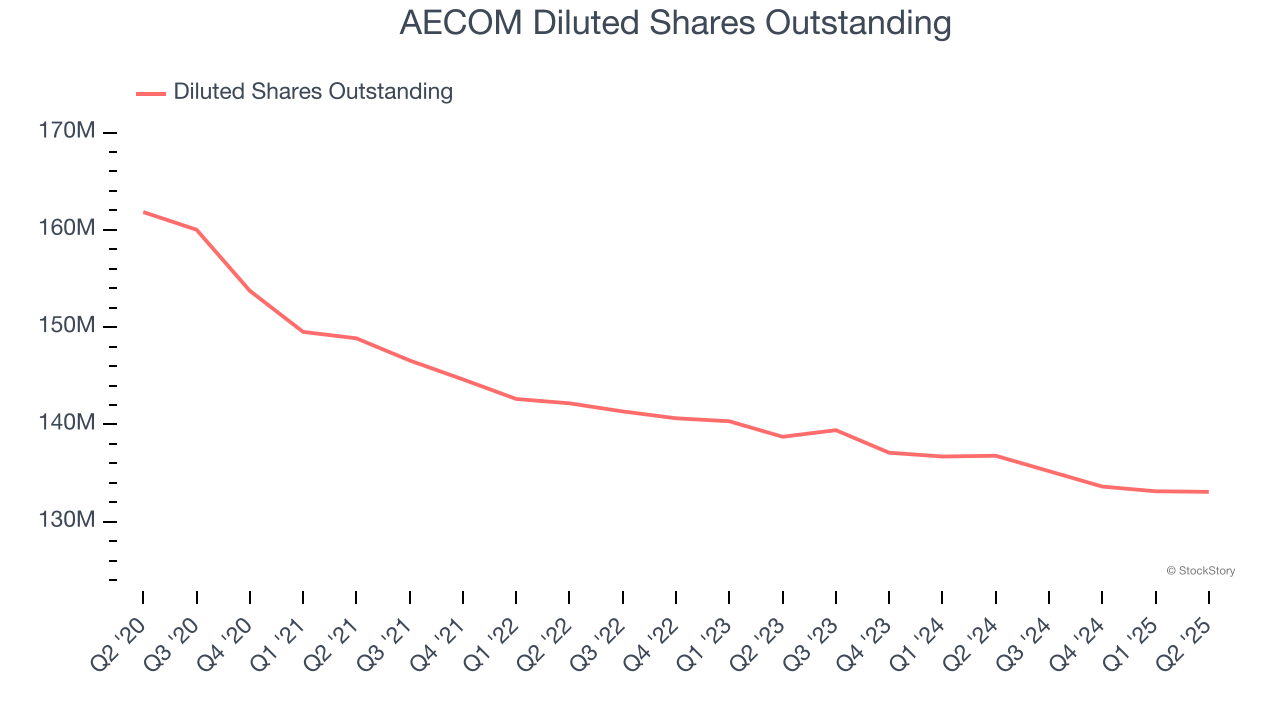
Like with revenue, we analyze EPS over a shorter period to see if we are missing a change in the business.
For AECOM, its two-year annual EPS growth of 19.7% was higher than its five-year trend. We love it when earnings growth accelerates, especially when it accelerates off an already high base.
In Q2, AECOM reported adjusted EPS at $1.34, up from $1.16 in the same quarter last year. This print beat analysts’ estimates by 6.2%. Over the next 12 months, Wall Street expects AECOM’s full-year EPS of $5.17 to grow 4.1%.
Key Takeaways from AECOM’s Q2 Results
It was good to see AECOM provide full-year EBITDA guidance that slightly beat analysts’ expectations. We were also happy its EPS outperformed Wall Street’s estimates. On the other hand, its revenue missed. Overall, this quarter was mixed. The stock traded up 1.7% to $114 immediately after reporting.
Should you buy the stock or not? The latest quarter does matter, but not nearly as much as longer-term fundamentals and valuation, when deciding if the stock is a buy. We cover that in our actionable full research report which you can read here, it’s free.





